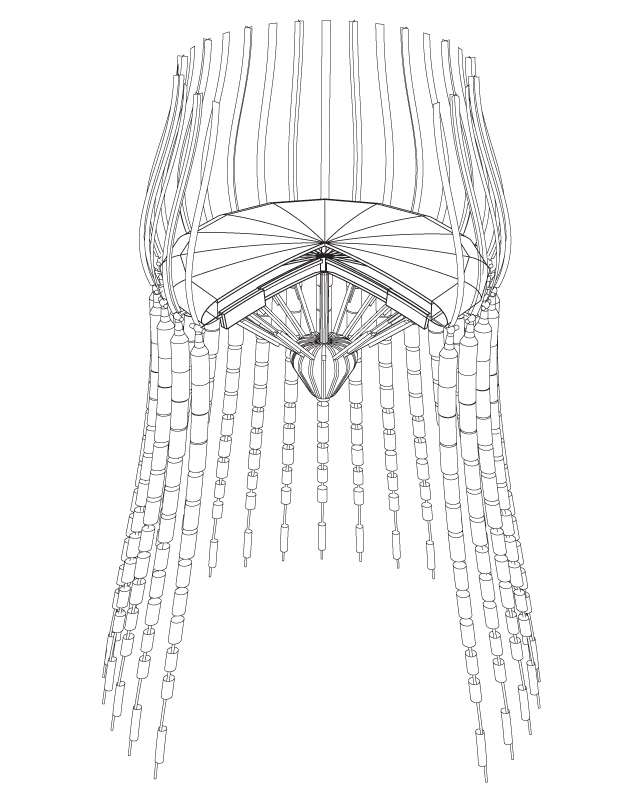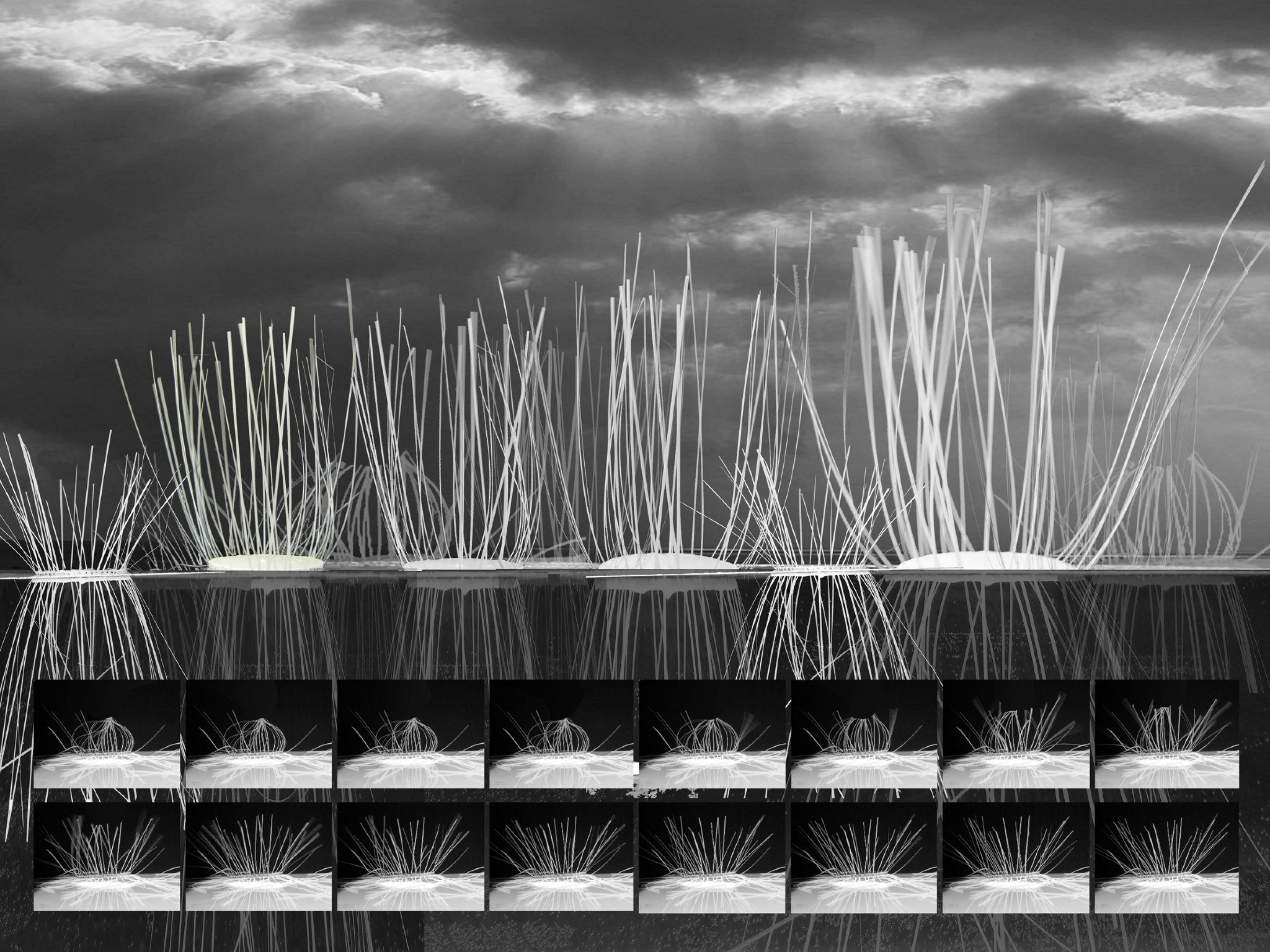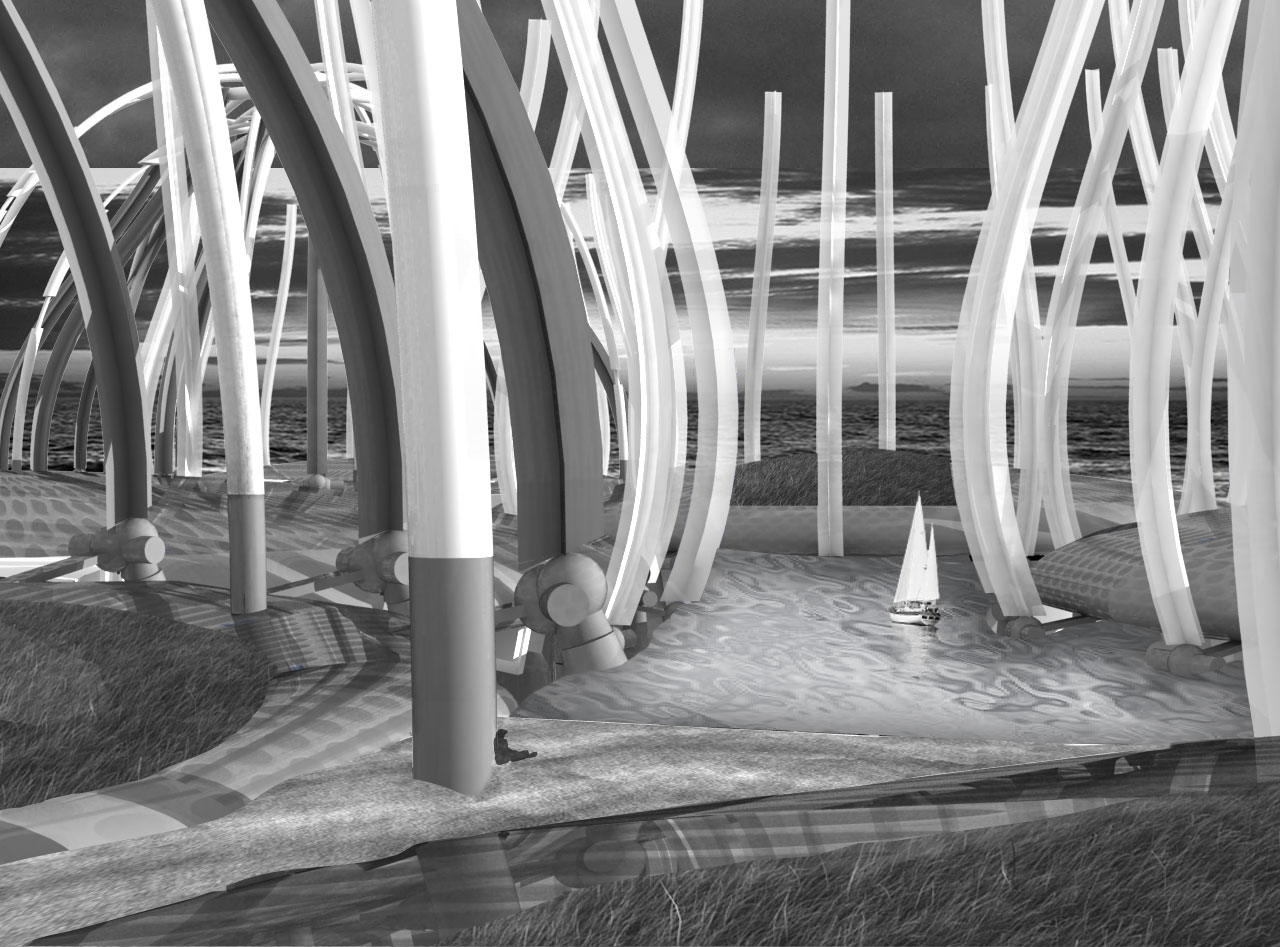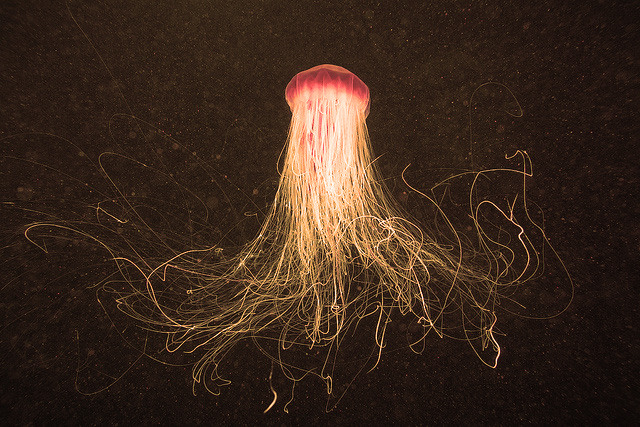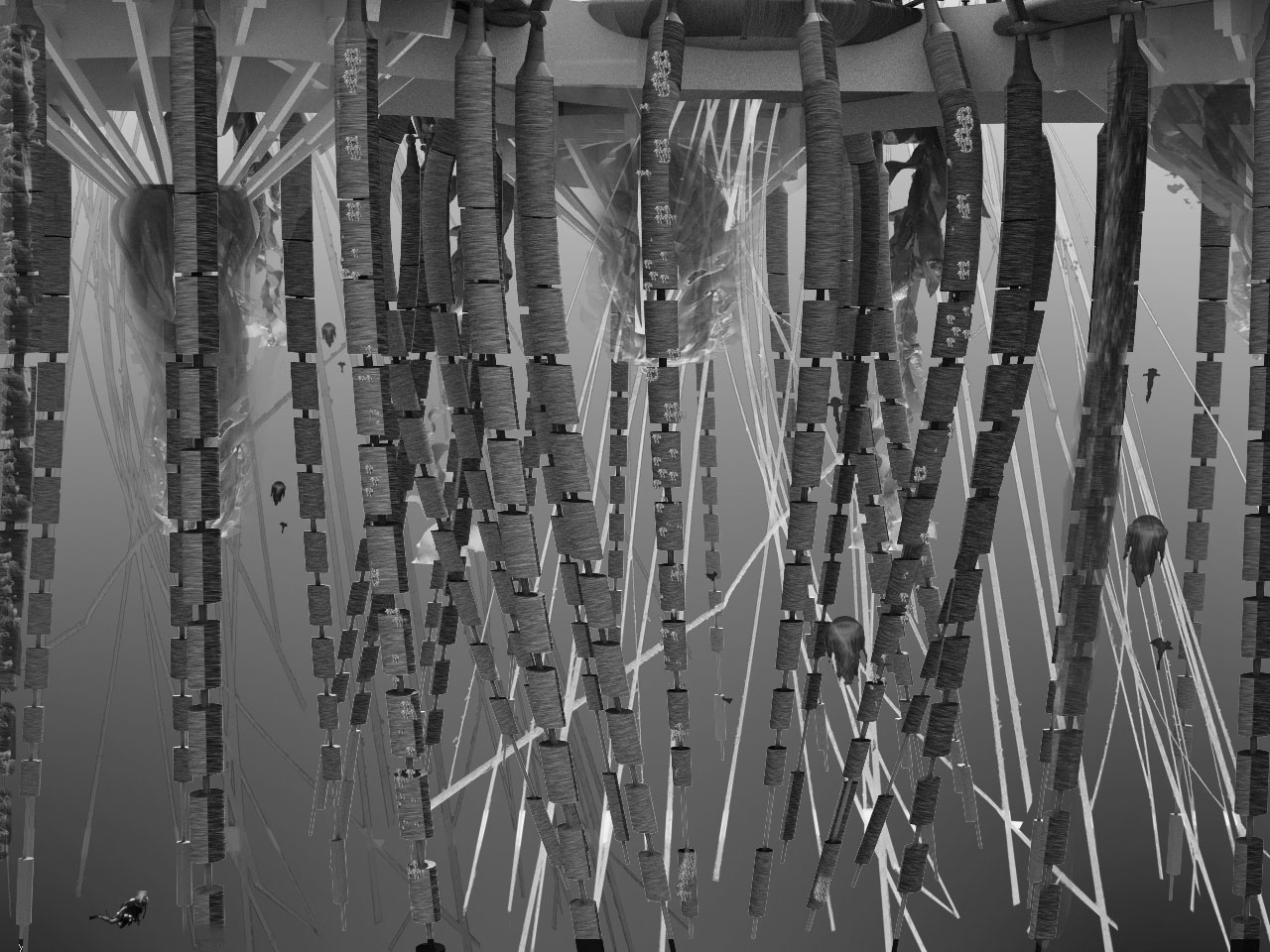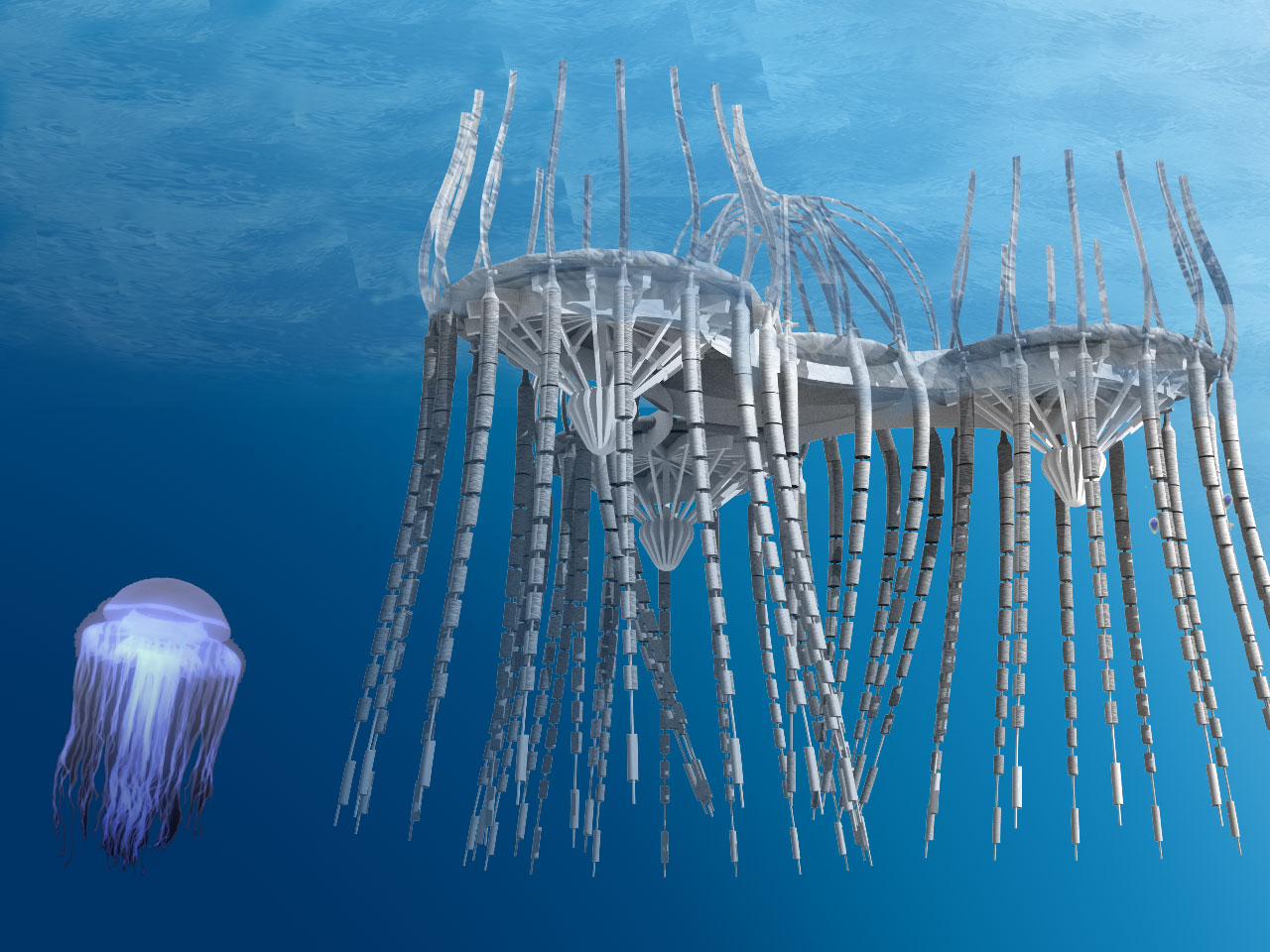
Architecture for Humanity, a San Francisco based non-profit architectural organization, approached our first-year graduate architecture studio at UC Berkeley with two challenges: to combat the alarming spread of toxic plastic waste throughout the world’s oceans (in particular the Pacific gyre), and to envision an alternative habitat for local species and human life to evacuate to as the sea levels continue to rise. Tivoli, a small, sinking Southern Pacific island served as a real-world example.
The Skele-F.I.S.H. (Floating Islands for Sustainable Habitation) is a collaborative product of sustainable energy analysis, modular design and time-based progression, from individual unit to a cluster of hundreds of symbiotic units. The bilateral structure can harness of the ocean’s wave energy below the surface, while the vertical wind turbines above would capture the wind energy. The overall structure could be manufactured from processed platic waste.
The solution was presented at the Studio for Urban Architecture in San Francisco, in front of a panel of area-based architects and planners, as well as members of Architecture for Humanity.
I collaborated with Mengxi Wu on the project. Jellyfish image by Alexander Semenov.
